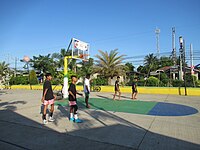
Nueva Ecija, officially the Province of Nueva Ecija, is a landlocked province in the Philippines located in the Central Luzon region. Its capital is the city of Palayan, while Cabanatuan, its former capital, is the largest local government unit (LGU). Nueva Ecija borders, from the south clockwise, Bulacan, Pampanga, Tarlac, Pangasinan, Nueva Vizcaya and Aurora. The province is nationally known as the Rice Granary of the Philippines, producing the largest rice yield in the country.
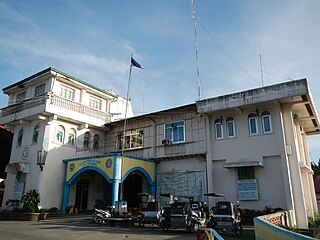
Santo Domingo, officially the Municipality of Santo Domingo, is a 3rd class municipality in the province of Nueva Ecija, Philippines. According to the 2020 census, it has a population of 61,092 people.

Gapan, officially the City of Gapan, is a 4th class component city in the province of Nueva Ecija, Philippines. According to the 2020 census, it has a population of 122,968 people.
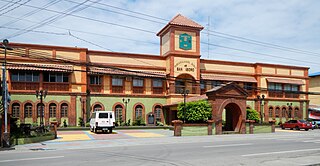
San Isidro, officially the Municipality of San Isidro, is a 2nd class municipality in the province of Nueva Ecija, Philippines. According to the 2020 census, it has a population of 54,372 people.

San Antonio, officially the Municipality of San Antonio, is a 1st class municipality in the province of Nueva Ecija, Philippines. According to the 2020 census, it has a population of 83,060 people.

Gabaldon, officially the Municipality of Gabaldon, is a 3rd-class municipality in the province of Nueva Ecija, Philippines. According to the 2020 census, it has a population of 38,958 people.

Cabiao, officially the Municipality of Cabiao, is a 1st class municipality in the province of Nueva Ecija, Philippines. According to the 2020 census, it has a population of 85,862 people. Cabiao is the 3rd most populous, one of the richest, and fastest growing municipality in the province, only behind Talavera and Guimba. If cities are included, the town ranks 6th.

Cabanatuan, officially the City of Cabanatuan, is a 1st class component city in the province of Nueva Ecija, Philippines. According to the 2020 census, it has a population of 327,325 people, making it the most populous city in Nueva Ecija and the fifth-most populous in Central Luzon.

San Jose, officially the City of San Jose, is a 3rd class component city in the province of Nueva Ecija, Philippines. According to the 2020 census, it has a population of 150,917 people.
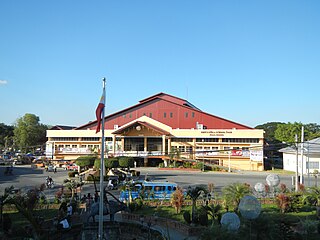
Rosales, officially the Municipality of Rosales, is a 1st class municipality in the province of Pangasinan, Philippines. According to the 2020 census, it has a population of 66,711 people.

Palayan, officially the City of Palayan, is a 5th class component city and capital of the province of Nueva Ecija, Philippines. According to the 2020 census, it has a population of 45,383 people, making it the least populated city in the Philippines.
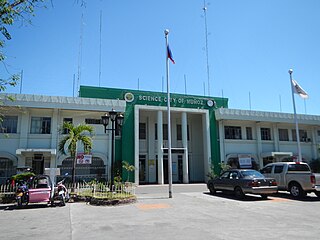
Muñoz, officially the Science City of Muñoz, is a 4th class component city in the province of Nueva Ecija, Philippines. According to the 2020 census, it has a population of 84,308 people.

Aliaga, officially the Municipality of Aliaga, is a 2nd class municipality in the province of Nueva Ecija, Philippines. According to the 2020 census, it has a population of 70,363 people.

Guimba, officially the Municipality of Guimba, is a 1st class municipality in the province of Nueva Ecija, Philippines. According to the 2020 census, it has a population of 127,653 people.

Jaen, officially the Municipality of Jaen is a 2nd class municipality in the province of Nueva Ecija, Philippines. According to the 2020 census, it has a population of 79,189 people.

Lupao, officially the Municipality of Lupao, is a 3rd class municipality in the province of Nueva Ecija, Philippines. According to the 2020 census, it has a population of 45,917 people.

Talugtug, officially the Municipality of Talugtug, is a 4th class municipality in the province of Nueva Ecija, Philippines. According to the 2020 census, it has a population of 25,236 people.
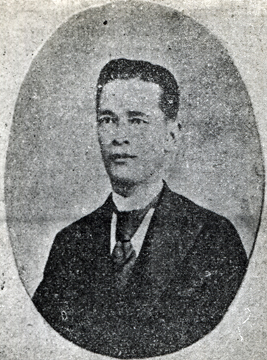
Mariano Núñez Llanera was a Filipino revolutionary general from Cabiao, Nueva Ecija who fought in his aforementioned home province, and also in the neighboring provinces of Bulacan, Tarlac, and Pampanga. He is considered one of the "three Fathers" of the Cry of Nueva Ecija, along with Pantaleon Valmonte and Manuel Tinio.

In Metro Manila, Philippines, tourism is a significant industry. In 2012, the city and the region welcomed 974,379 overnight visitors. Serving as the main gateway to the Philippines' numerous destinations, the city attracts mainly international tourists, with a total of 3,139,756 visitors in 2012. Global Blue ranks Manila as the eleventh 'Best Shopping Destination' in Asia. The city holds the tenth position in MasterCard's global top 20 fastest-growing cities for international visitors from 2009 to 2013.
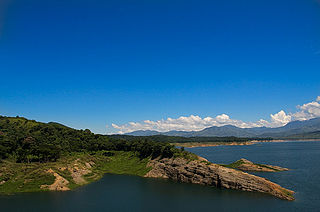
The Pantabangan–Carranglan Watershed Forest Reserve is a conservation area located in the upper reaches of the Pampanga River in Nueva Ecija, Philippines, and borders the Sierra Madre and Caraballo Mountains in Aurora and Nueva Vizcaya. It encompasses 84,500 hectares of the drainage basin surrounding the Pantabangan Lake, an impoundment of the Pampanga River by the Pantabangan Dam. The multi-purpose dam is situated at the confluence of Pampanga River's two headwaters, namely the Pantabangan and Carranglan Rivers in the municipality of Pantabangan. It stretches above the dam site for 21 kilometres (13 mi) to where Carranglan River originates in the Caraballo on the north, and for 18 kilometres (11 mi) to where Pantabangan River originates in the Sierra Madre on the east. It is considered a critical watershed for the agricultural economy and hydroelectric power generation in the region of Central Luzon.






